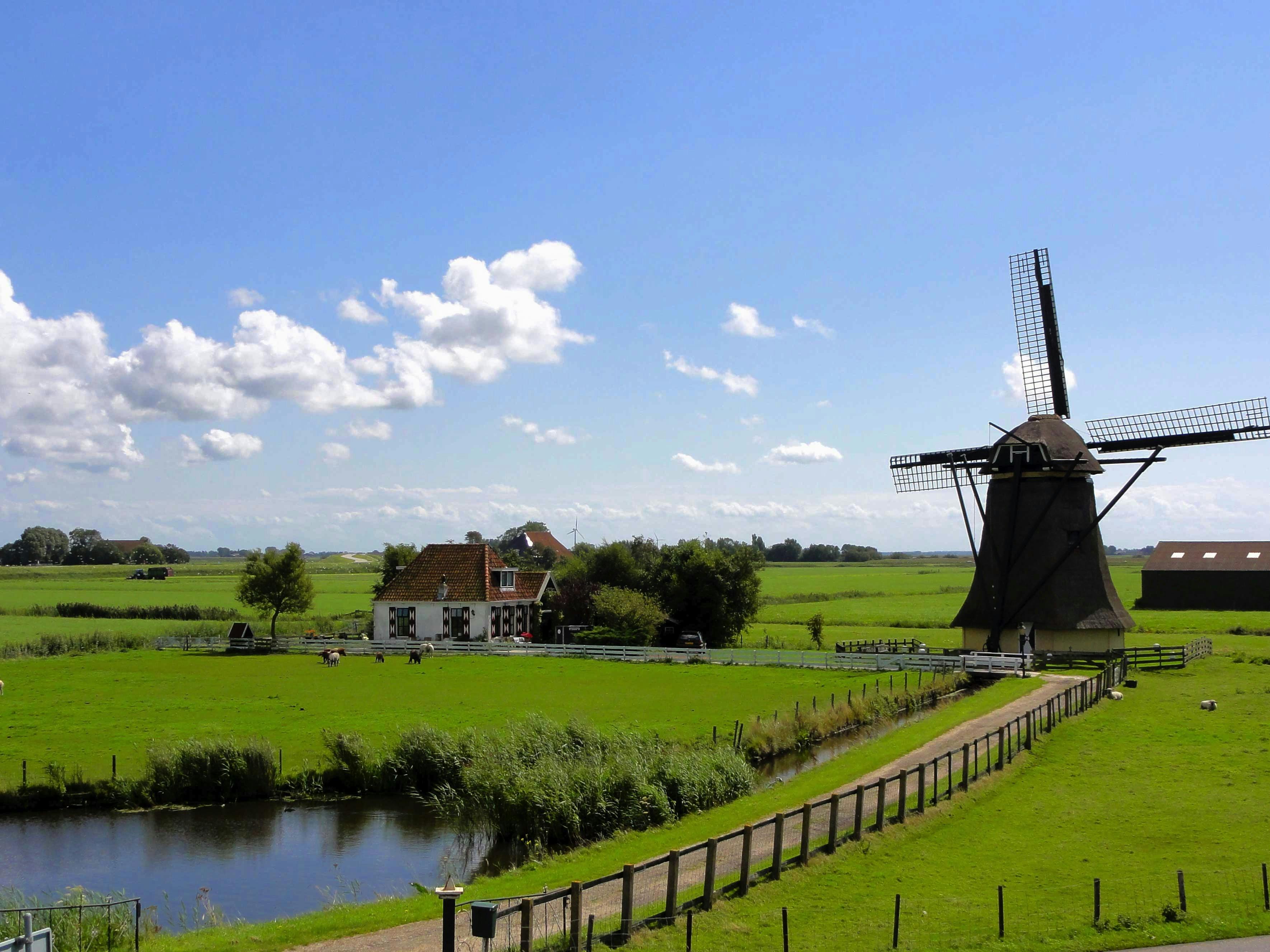Having a pond can be a great way to add beauty and life to your outdoor space, but sometimes problems can arise. One of the most common issues is when your pond water turns brown and cloudy. This can be caused by a range of factors, from natural occurrences to human intervention. Understanding the cause of the discolouration and cloudiness can help you to take steps to restore your pond’s clarity and health.Brown and cloudy pond water can be caused by a number of factors, including the presence of sediment, decaying organic matter, an overabundance of nutrient-rich fertilizers, excessive algae growth, or contamination from runoff water.
Common Reasons for Discolored Pond Water
Discoloration of pond water is a common issue that pond owners face. It can be caused by a number of factors, including the presence of algae, excess nutrients in the water, or inadequate filtration. Here are some of the most common reasons for discolored pond water:
Algae Bloom
Algae blooms are one of the most common causes of discolored pond water. Algae can grow rapidly in nutrient-rich waters, causing a greenish tint to become visible on the surface. Algae blooms can also cause other problems such as depleted oxygen levels and reduced clarity in the water.
Excess Nutrients
Excess nutrients in the water can also cause discoloration. These nutrients may come from fertilizer runoff from nearby fields, decaying organic matter, or overfeeding of fish. If not managed properly, excess nutrients can cause an algae bloom and discolor your pond’s water.
Inadequate Filtration
Inadequate filtration is another common cause of discolored pond water. Without adequate filtration, dirt and debris can accumulate in your pond’s water and turn it cloudy or brownish in color. Filtration systems are designed to remove debris from your pond’s water and keep it clear and clean.
By addressing these common causes of discolored pond water, you can ensure that your pond remains healthy and clear for years to come.
Identifying the Source of Brown and Cloudy Pond Water
Brown and cloudy pond water can be caused by a variety of different sources. In order to identify the source, it is important to first determine if the discoloration is caused by organic or inorganic matter. Organic discoloration is typically caused by decaying plant material such as leaves, twigs, and other debris that has been left in the pond. Inorganic discoloration can be caused by rust from metal objects, clay particles, silt, or any other particles that are present in the water.
The next step in identifying the source of brown and cloudy pond water is to test for levels of pollutants such as nitrogen, phosphorous, fecal coliform bacteria, and heavy metals. These pollutants can come from runoff from agricultural land or other sources of wastewater. If any of these pollutants are found to be present at elevated levels then it is likely that they are causing the brown and cloudy appearance of the pond water.
Another potential source of brown and cloudy pond water could be a high concentration of algae in the water. Algae can quickly take over a pond if conditions are right and will block out sunlight which will cause a brown coloration in the water. Algae blooms can also reduce oxygen levels in a pond which can be detrimental to aquatic life living within it.
The last potential source of brown and cloudy pond water could be the presence of iron bacteria or iron-oxidizing bacteria which feed off minerals found within well water or springs. This type of bacterial growth will cause orange-brown discoloration in the pond water as well as slimy deposits on surfaces around the edges of the pond.
Identifying exactly what is causing brown and cloudy pond water can be tricky so it’s always best to consult a professional who specializes in aquatic health before taking any drastic action such as applying chemicals to try to remedy this problem. With proper testing and analysis they should be able to identify what is causing this issue so that an appropriate course of action can be taken.
Preventing Brown and Cloudy Pond Water
Maintaining crystal clear water in your pond is essential for its health and beauty. Unfortunately, brown and cloudy pond water is a common problem that can be caused by a variety of factors. The good news is that there are simple steps you can take to prevent this from happening.
The first step in preventing brown and cloudy pond water is to make sure the pond has adequate filtration. A filter will help remove debris and other particles from the water, keeping it clean and clear. If you have an existing filter, make sure it is regularly cleaned and maintained. If you don’t already have a filter, consider investing in one that is appropriate for your pond size.
Another important factor to consider when preventing brown and cloudy water is the type of fish you have in your pond. Fish release waste into the water which can contribute to cloudiness if not properly filtered out. Having too many fish or fish that are too large for the size of the pond can cause problems with cloudiness as well. Make sure the number of fish you have is appropriate for your pond size, and consider using a biofilter to help reduce waste buildup in the water.
Finally, it’s important to test your pond’s water on a regular basis for pH levels, ammonia levels, nitrite levels, and nitrate levels so that any issues can be addressed quickly before they become major problems. Regular testing also helps identify any potential sources of contamination such as runoff from nearby lawns or gardens that may be causing cloudiness or discoloration in your pond’s water.
By taking these steps to maintain proper filtration, keeping an appropriate number of fish, and regularly testing your water’s pH levels, you can work towards preventing cloudy or brownish-looking water in your pond.
Why Is There So Much Suspended Matter in My Pond Water?
Pond water often contains a variety of suspended matter, which can include bits of algae, pieces of decaying organic matter, and even tiny particles of soil. This suspended matter can cause your pond to appear cloudy or murky, and it can be difficult to get rid of. In order to determine why there is so much suspended matter in your pond water, it is important to understand what causes this type of contamination.
The most common causes of suspended matter in pond water are improper maintenance and improper filtration. Poor maintenance practices can lead to an accumulation of decaying organic material on the bottom of the pond, which can then be stirred up by wind or waves. This material will then become suspended in the water column, making it appear cloudy or murky. Improper filtration can also cause suspended matter to accumulate in a pond over time. If a filter is not properly maintained or sized for a particular pond, it may not be able to remove all the particulates that enter the water column.
In addition to poor maintenance and filtration practices, there are other factors that can lead to an accumulation of suspended matter in your pond water. Poor circulation and stagnation within the pond can also contribute to this problem. When there is little flow through the system, particulates have more time to settle out and accumulate on the bottom before being removed by filters or naturally expelled from the system. Additionally, when certain nutrients like phosphorus are added into a body of water they can cause an increase in algae growth which will also lead to more suspended matter in your pond water.
If you notice that there is an excessive amount of suspended matter accumulating in your pond over time, it is important to take steps towards resolving this issue as soon as possible. Proper maintenance practices like cleaning debris from the surface regularly and properly maintaining filters should be performed routinely in order to reduce this problem. Additionally, increasing circulation within your system by adding aeration devices such as bubblers or fountains may help reduce stagnant areas where particles have time to settle out before being removed by filters or naturally expelled from the system.

Testing Your Pond’s Water Quality
Testing your pond’s water quality is an important step in addressing brown and cloudy water issues. Poor water quality can lead to a variety of problems, including the growth of algae, which can cause the water to become murky and brown. By testing your pond’s water quality, you can identify any potential problems that may be causing the water to become discolored or cloudy and take steps to improve it.
Water Testing Kits
The first step in testing your pond’s water quality is to purchase a testing kit. These kits typically include test strips that measure the levels of various chemicals in the water, such as pH, nitrates, phosphates, and chlorine. Some kits also include a test for dissolved oxygen levels. The results from these tests will give you an indication of whether or not there are any potential issues with your pond’s water quality that could be causing the discoloration or cloudiness.
Water Analysis
Once you have collected the results from your test strips, it is important to analyze them carefully. If any of the levels are outside of their ideal range for a healthy pond environment – such as too much chlorine or too few nitrates – then this could indicate a problem with your pond’s water quality that needs to be addressed. You may need to adjust certain parameters such as pH or add additional nutrients or oxygen in order to restore balance and improve clarity.
Regular Testing
It is also important to regularly test your pond’s water quality in order to ensure that it remains healthy and balanced. This will help you identify any changes in chemical levels before they become an issue and allow you to take corrective action before conditions worsen. That way, you can keep your pond looking its best and prevent brown and cloudy issues from becoming a problem.
Reducing Algae Blooms in Ponds
Ponds can be prone to algae blooms, which cause the water to become cloudy and brown. In order to reduce these blooms, several steps can be taken. The first is to make sure that the pond is not receiving too much direct sunlight. If the pond is in a sunny spot, consider shading it with trees or other plants. Additionally, reducing nutrient levels in the pond’s water will help deter algae growth. This can be done by controlling fertilizer runoff from nearby agricultural fields or lawns, as well as limiting the amount of organic material that enters the water from yard debris and other sources.
Another way to reduce algae growth is to introduce aquatic plants into the water. These plants will compete with algae for nutrients and thus reduce its growth. Additionally, adding fish species like koi or goldfish that feed on algae can help keep populations in check. Finally, if necessary, chemical algaecides can be used but should only be applied if all other methods have failed and with caution as they may also kill important aquatic organisms such as plankton which serve as food for fish and other animals.
By following these steps, pond owners can help reduce algae blooms and keep their ponds clean and healthy for years to come.
Purifying Cloudy and Brown Pond Water
Pond water can be cloudy and brown due to various factors, such as the presence of algae, dirt, decaying organic matter, and other pollutants. Fortunately, it is possible to purify or clean up cloudy and brown pond water. The most effective way to do this is to use a combination of physical filtration and chemical treatments.
Physical filtration involves using a mechanical filter or skimmer to remove particles from the pond’s water. This method is typically used in conjunction with chemical treatments such as activated charcoal, which can help absorb pollutants and contaminants from the water. Additionally, other methods such as ultraviolet (UV) light can be used to kill bacteria and other microorganisms in the water.
It is important to note that these methods should be used in combination with other strategies for maintaining healthy pond conditions. These include regularly cleaning out debris from the pond’s bottom, removing any dead vegetation or animals from the water’s surface, controlling algae growth by adding aquatic plants or using algaecides, and ensuring that there is adequate aeration for oxygen levels in the pond.
By taking these steps, it is possible to purify or clean up cloudy and brown pond water effectively. Doing so will help maintain healthy conditions for aquatic life as well as make your pond aesthetically pleasing.

Conclusion
Brown and cloudy pond water can be caused by a variety of factors including sediment, algae, organic matter, and pollution. The best way to determine the cause of your pond’s discoloration is to test the water for various parameters such as pH, dissolved oxygen levels, nitrates and phosphates. Once these measurements are taken, it is possible to pinpoint the cause of the discoloration and take steps to improve your pond’s water quality. In some cases, it may be necessary to contact a professional to help address the issue.
No matter what the cause of brown and cloudy pond water is, keeping your pond clean and healthy is essential for preventing further damage. Regular maintenance such as removing debris from the surface of the pond and cleaning out any accumulated sediment will go a long way in preventing future problems. With proper care and attention, your pond will remain an attractive part of your landscape for many years to come.

